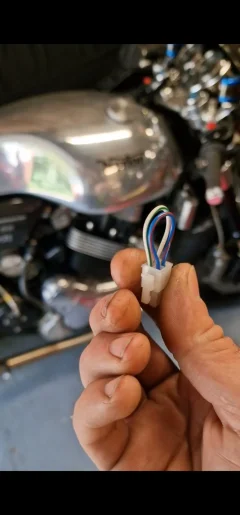Stu Bodycote
VIP MEMBER
- Joined
- Jun 12, 2020
- Messages
- 1,600
A late euro3 bike with the headlight on permanently regardless of switch position, can usually be sorted by binning the harness jumper inside the headlight (see pic).
Some had their switch gear blanked off too....just pop the switch button off and flick out the bit of plastic that was put in there to jam it in the on position.
Most management lights staying on with euro 4, if the bike runs well, is usually just a sporadic signal received from the chinese cam sensor when the battery is slightly down on power. The Bosch cam sensors do seem to help with this from what Ive found.
Some had their switch gear blanked off too....just pop the switch button off and flick out the bit of plastic that was put in there to jam it in the on position.
Most management lights staying on with euro 4, if the bike runs well, is usually just a sporadic signal received from the chinese cam sensor when the battery is slightly down on power. The Bosch cam sensors do seem to help with this from what Ive found.
Attachments
Last edited:

